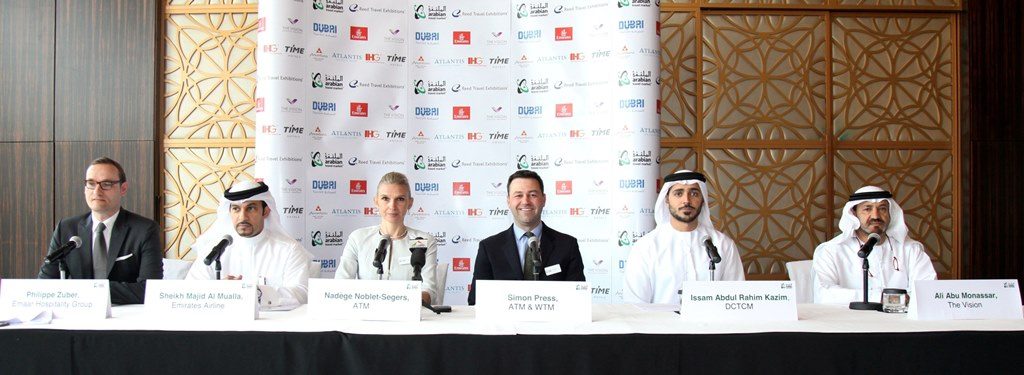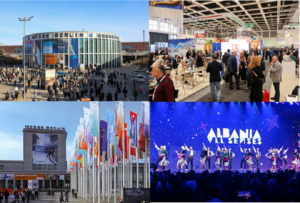Smart technologies reshaping regional tourism

Dubai – Global Growth in mobile bookings expected to reach 35% of online travel bookings by 2018 as wearable technology takes off; opportunities in business tourism development also highlighted with Dubai 2020 the primary catalyst.
Euromonitor International released its latest tourism Global Trends report at Arabian Travel Market (ATM) with up-to-date insight into MENA economic trends and specific emphasis on the future impact of smart technologies and opportunities for business tourism growth in the region.
The report findings, which cover seven regions: the Americas, the UK, Europe, Middle East, Africa, Asia and India, were presented by Kinda Chebib, Senior Analyst, Euromonitor International at a packed VISA Seminar Theatre session.
“Destination services, personalisation, mobile bookings and peer-to-peer are expected to be the main disruptive forces in the travel industry over the next five years, but what is particularly worth noting is the rise in mobile technology as a transformational channel for the tourism landscape in terms of bookings, customer service and consumer behavior,” noted Chebib.
Looking at the Middle East specifically, Euromonitor key performance indicators (KPIs) for 2013-15 show US$ percentage growth in air transport value set to rise from 6.1% to 12%, hotel value rising from 7.4% to 9.1% and travel retail value predicted to jump from 7.1% to 9.7%.
Incoming tourist receipts will also grow by as much as 10.9% in 2014 and 10.4% in 2015, driven by infrastructure developments, with the GCC countries the primary beneficiaries.
The report also highlighted new areas of tourism development opportunity with the design industry a potential catalyst for growth as well as the forthcoming Dubai Expo 2020.
Said Chebib: “The Middle East is positioning itself as a design hub, from Beirut, which has the talent and production capabilities, to Dubai, which has the financial resources to create the environment. In recent years, events such as Design Days Dubai and Beirut Design Week have attracted international design professionals and helped design a new face of the Middle East.”
Chebib says that this is promoting a new dimension in tourism with events such as Design Days attracting 12,150 visitors in 2014, 40% of which were regional and international tourists, and showcasing a different facet to Dubai’s cultural proposition.
“In the run-up to Expo 2020, the opportunities to develop the business tourism segment are significant, and the Euromonitor International Global Trends report provides insightful data for industry strategists looking to fine tune their offering/products as we count down to the end of the decade,” said Nadege Noblet-Segers, Exhibition Manager, Arabian Travel Market.
‘Business tourism currently accounts for 20% of all tourism receipts in Dubai and UAE MICE sector business generates US$653 million per year; so with the goal of doubling the number of visitors to the UAE to 20 million per annum, this is an exciting time for the industry,” she added.
In her presentation, Chebib also looked at the mainstreaming of wearable electronics and the correlation between the growth in travel technology and upswing in online travel sales, which reached US$590 billion in 2013, or 27% of all travel sales.
“While Asia Pacific is expected to drive global growth in online travel, with its online travel sales set to double from US$90 billion in 2013 to US$180 billion in 2018, it is a growing global trend. Mobile devices are increasingly key in the travel industry in terms of both customer service and bookings with mobile bookings are expected to reach 35% of online travel bookings by 2018,” she said.
A number of travel companies and technology developers are already addressing the trend with Expedia releasing a traveller notification app for the Samsung Galaxy Gear smartwatch in August 2014, and working on one for Google Glass; Starwood creating its own Google Glass app that allows bookings and provides hotel directions, as well as plans to use the Apple Watch as a room key in future; and Iberia, Vueling and Air Berlin have announced that their passengers will be able to download boarding passes directly onto their wearable devices.
Euromonitor data predicts that wearable internet-connected devices are expected to rise from nine million units sold globally in 2013 to a forecasted 180 million in 2016 led by demand for the Apple Watch.- arabiantravelmarket.com
May, 2015














